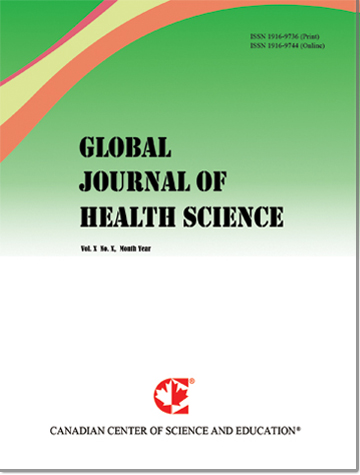Distribution of Antibiotic Resistance Genes in Gram Negative Bacteria Isolated from Contact Surfaces at Slaughterhouses and Butcheries
- Omar B. Ahmed
- Atif H. Asghar
- Majid Bamaga
- Bassam Mashat
- Fayez S. Bahwerth
Abstract
BACKGROUND: Cross contamination of contact surfaces in slaughterhouses and meat shops (butcheries) may contain antibiotic resistance genes that pose a serious public health challenge.
AIMS: The present study aimed to assess prevalence of antibiotic resistance genes in Gram-negative strains isolated from contact surfaces at slaughterhouses and meat shops.
METHODS: A total of 71 swab samples were collected from different contact surfaces at slaughterhouses and meat shops and cultured for bacterial identification, antibiotic resistance testing, and resistance gene detection. Polymerase chain reaction (PCR) was used to detect strA-strB, sul2, aadA1, tet(B), tet(A), cat, sul3, and blaSHV resistant genes in Gram-negative bacteria.
RESULTS: The results showed that the most common Gram-negative bacteria were Klebsiella pneumoniae (41.2%) and Escherichia coli (35.3%) followed by Enterobacter cloacae (5.9%). Resistance was most prevalent against trimethoprim-sulfamethoxazole (88.1%), ampicillin (85.3%), and cefuroxime (70.6%). The most prevalent antibiotic resistance gene was aadA1 (88.2%), followed by tet (A) (73.5%), and sul3 (70.6%). The results also indicated that 29.4% of the bacteria carried one resistance gene, 44.1% carried two genes, 20.6% carried more than two genes.
CONCLUSIONS: The findings of this study emphasize the critical role of hygiene and antimicrobial stewardship in slaughterhouses and butcheries. The high prevalence of Gram-negative bacteria and their resistance to multiple antibiotics highlight the urgent need for improved sanitation practices and responsible antibiotic usage. Future studies should focus on whole-genome sequencing to further investigate resistance mechanisms and explore alternative disinfection strategies to reduce bacterial contamination in meat-processing facilities.
- Full Text:
 PDF
PDF
- DOI:10.5539/gjhs.v17n2p19
Journal Metrics
- h-index: 88 (The data was calculated based on Google Scholar Citations)
- i10-index: 464
- WJCI (2022): 0.897
- WJCI Impact Factor: 0.306
Index
- Academic Journals Database
- BASE (Bielefeld Academic Search Engine)
- CNKI Scholar
- Copyright Clearance Center
- Elektronische Zeitschriftenbibliothek (EZB)
- Excellence in Research for Australia (ERA)
- Genamics JournalSeek
- GHJournalSearch
- Google Scholar
- Harvard Library
- Index Copernicus
- Jisc Library Hub Discover
- JournalTOCs
- LIVIVO (ZB MED)
- MIAR
- PKP Open Archives Harvester
- Publons
- Qualis/CAPES
- ResearchGate
- ROAD
- SafetyLit
- Scilit
- SHERPA/RoMEO
- Standard Periodical Directory
- Stanford Libraries
- The Keepers Registry
- UCR Library
- UniCat
- UoB Library
- WJCI Report
- WorldCat
- Zeitschriften Daten Bank (ZDB)
Contact
- Erica GreyEditorial Assistant
- gjhs@ccsenet.org
